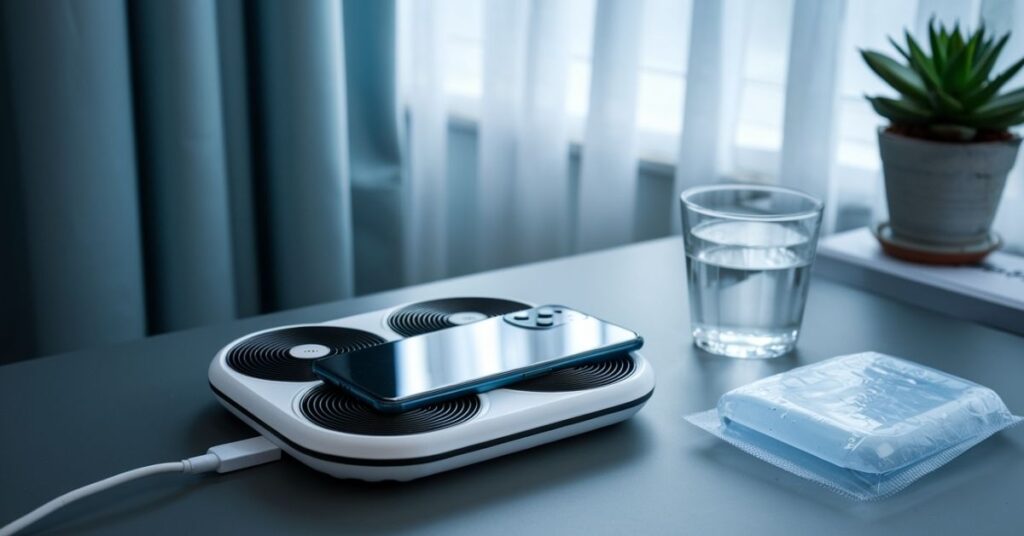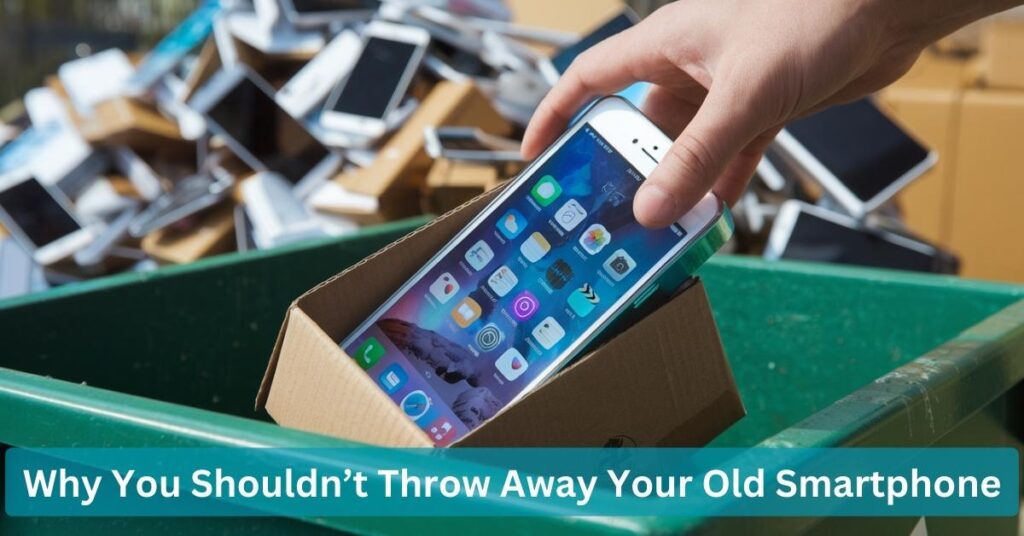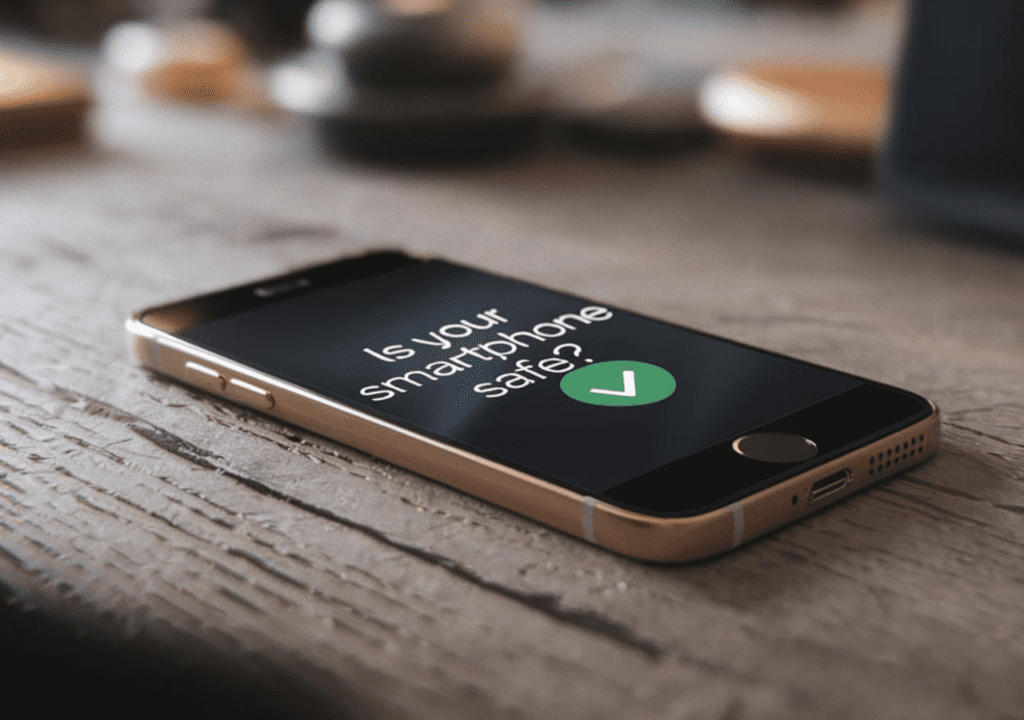Summer’s heat can take a toll on your smartphone, causing it to overheat and potentially leading to frustrating performance issues or permanent damage. Overheating not only slows down your device but can also result in unexpected shutdowns, reduced battery efficiency, or even hardware failure. In today’s world, where smartphones are essential for work, entertainment, and staying connected, managing heat becomes crucial to ensure smooth functionality.
Excessive heat affects more than just performance; it can shorten your phone’s lifespan. Prolonged exposure to high temperatures can degrade internal components, especially the battery, causing it to lose capacity faster. Additionally, overheated processors may throttle their performance to prevent damage, leaving you with sluggish apps and stuttered videos. By understanding the risks and taking preventive measures, you can protect your device and enjoy uninterrupted use, even during the hottest summer days.
Strategies for Maintaining Your Phone’s Coolness
Avoid Direct Sunlight and Hot Surfaces
Keep your phone out of direct sunlight and away from hot surfaces like car dashboards. Prolonged exposure to high temperatures can quickly overheat your device. Instead, store your phone in a shaded, cool area when not in use.
-
Use Airplane Mode in Extreme Heat
Turning on airplane mode disables wireless connections, reducing your phone’s energy consumption and preventing it from overworking in hot conditions. This can help lower its temperature when you don’t need mobile data or Wi-Fi.
-
Close Unnecessary Apps
Apps running in the background consume processing power and generate heat. Make it a habit to close unused apps to reduce the workload on your phone, keeping it cooler and running more efficiently.
- Reduce Screen Brightness
High screen brightness can increase your phone’s temperature. Lowering the brightness or switching to auto-brightness can reduce the heat generated, especially when you’re using the phone for an extended period. -
Use Cooling Accessories
Invest in accessories like heat-dissipating cases, portable fans, or cooling pads. These tools are designed to help keep your phone cool during intensive usage, such as gaming or video streaming.
-
Charge in Cool Environments
Charging your phone in hot places can make it heat up. Always charge it in a cool, well-ventilated area, and avoid charging your phone while it’s exposed to direct sunlight or placed on heat-retaining surfaces.
-
Monitor Battery Health
Over time, a degraded battery can produce more heat. Regularly check your battery health in the settings and replace it if necessary to prevent overheating issues and maintain optimal performance.
-
Take Breaks During Intensive Use
If you’re using your phone for resource-heavy tasks like gaming or video editing, take breaks to allow it to cool down. This helps prevent overheating and keeps the phone running smoothly for longer periods.
- By following these strategies, you can effectively manage your phone’s temperature and extend its lifespan while maintaining optimal performance.
For your smartphone, what temperature is too high?
For most smartphones, temperatures above 95°F (35°C) are considered too high and can lead to overheating. Prolonged exposure to temperatures above this threshold can cause performance issues, such as slower processing speeds, frequent shutdowns, and reduced battery life. If your phone consistently operates at high temperatures, it may struggle to function properly, affecting apps, games, and overall usability.
Temperatures above 100°F (38°C) are especially dangerous and can cause permanent damage to your phone’s internal components, including the battery and processor. To prevent overheating, avoiding leaving your phone in hot environments like a car on a sunny day or using it for extended periods in direct sunlight is important. Keeping your device cool will help maintain optimal performance and prolong its lifespan.
Proactive Steps to Prevent Overheating
Keeping your smartphone cool in summer starts with simple yet effective proactive measures. Avoiding direct sunlight and hot surfaces is one of the easiest ways to prevent overheating. Leaving your phone exposed to the sun or placing it on heat-absorbing surfaces like car dashboards can cause its temperature to rise rapidly. Instead, store your device in a shaded, ventilated area when not in use to keep it safe.
Using airplane mode in extreme heat can significantly reduce your phone’s workload and heat production. By temporarily disabling wireless connections like Wi-Fi, Bluetooth, and mobile data, your device consumes less power, helping it stay cooler. This is especially useful during outdoor activities or in areas with poor signal strength, where phones tend to overheat due to constant network searching.
Another key step is keeping your apps and software updated. Updates often include bug fixes and optimizations that improve energy efficiency and prevent your device from working harder than necessary. Regular updates ensure smoother performance and reduce unnecessary heat buildup, helping your smartphone withstand the summer heat while maintaining peak functionality.
Common Causes of Smartphone Overheating
Smartphones are sensitive to heat, and several everyday activities can contribute to overheating, especially during summer. Environmental factors like high temperatures and direct sunlight play a significant role. Leaving your phone in a hot car or using it outdoors for extended periods can cause the device to heat up quickly. Even seemingly harmless actions, like placing your phone on a sunny windowsill, can push its temperature beyond safe limits.
Intensive usage, such as gaming, video streaming, or running resource-heavy apps, generates a lot of internal heat. Combined with summer temperatures, these activities can overburden your phone’s processor and battery. Charging habits are another common culprit; fast charging or using the phone while it’s plugged in can produce excess heat. Additionally, protective cases that trap heat instead of allowing it to dissipate can exacerbate the problem, especially during extended use or charging.
By recognizing these causes, you can adjust your habits and reduce the risk of overheating. Small changes, like avoiding direct sunlight, limiting heavy usage, and using heat-dissipating cases, can help keep your smartphone cool and functioning optimally throughout the summer
Is it safe to place your phone in the fridge to cool it down?
- Avoid Temperature Shock: Putting your phone in the fridge can cause a sudden drop in temperature, which isn’t good for the device.
- Condensation Risk: The cold air can cause moisture inside the phone, leading to potential damage.
- Internal Damage: Condensation can affect sensitive components like the screen, battery, and processor.
- Warranty Concerns: Damaging your phone this way might void any warranty or protection plan.
- Better Cooling Options: Instead of using the fridge, place your phone in a cool, dry area with good ventilation to let it cool naturally.
- Use Safe Cooling Accessories: Consider using a phone cooling pad or fan for effective, safe cooling.
Smart Charging Practices
How and where you charge your smartphone can significantly impact its temperature and overall performance. Charging in cool environments is one of the simplest ways to prevent overheating. Avoid placing your phone on heat-retaining surfaces like beds or couches while charging, as these can trap heat. Instead, use a flat, hard surface in a well-ventilated area to allow proper airflow and keep your device cool during charging.
Overcharging and fast charging in hot conditions can generate excessive heat, putting unnecessary strain on your phone’s battery. While fast chargers are convenient, they can cause the battery to heat up quickly, especially in warm environments. To avoid this, consider using a standard charger or charging your phone when it’s not too hot. Unplugging the device once it reaches 100% can also help prevent unnecessary heat buildup and extend your battery’s lifespan.
By adopting these smart charging practices, you can minimize heat-related issues, protect your phone’s battery health, and ensure consistent performance, even during the hottest summer months.
Best Practices While Using Your Smartphone
Adopting simple habits while using your smartphone can help prevent overheating and improve its overall efficiency. One of the easiest adjustments is reducing screen brightness. High brightness levels not only consume more power but also generate extra heat. Switching to auto-brightness or manually lowering the brightness can significantly reduce the strain on your device, especially in summer.
Closing unnecessary apps in the background is another effective way to manage heat. These apps consume resources even when not in use, causing your processor to work harder and produce more heat. Regularly clearing unused apps can keep your phone cooler and improve its performance.
Enabling battery-saver mode is a quick fix to minimize heat generation. This feature optimizes your phone’s settings by reducing performance and limiting background activities, allowing the device to run cooler. Using battery-saver mode during extended usage or in hot conditions can help keep your phone operating efficiently while preserving its battery life. These best practices are simple yet powerful tools to maintain your smartphone’s performance during the summer heat.
Emergency Steps if Your Phone Overheats
If your smartphone overheats, acting quickly and correctly can prevent lasting damage. The first step is to power off your device and immediately remove it from any heat sources. Whether it’s direct sunlight, a hot car, or a warm charging spot, relocating your phone to a cool, shaded area helps lower its temperature. Powering it down reduces internal heat generation, allowing the device to cool more efficiently.
It’s important to avoid common myths, such as placing your overheated phone in a refrigerator or freezer. While this may seem like a quick fix, sudden temperature changes can cause condensation inside the device, potentially damaging internal components. Instead, let your phone cool naturally at room temperature to avoid additional issues.
Patience is key—don’t try to use your phone again until it has fully cooled down. Taking these emergency steps ensures your device recovers safely and minimizes the risk of permanent damage, helping it perform optimally even in challenging summer conditions.
Long-Term Tips for Heat Management
- Choosing Devices Designed for Heat Resistance
- Regular Maintenance (Cleaning Ports and Screens)
- Monitoring Battery Health
Conclusion
Taking proactive steps to prevent smartphone overheating is crucial for maintaining its performance and longevity. The summer heat can put a significant strain on your device, but by following simple preventive measures—like managing charging habits, using the right accessories, and avoiding extreme temperatures—you can protect your phone from heat-related issues. These actions not only improve your phone’s day-to-day functionality but also help ensure it runs smoothly for years to come.
By incorporating these tips into your routine, you’re not only safeguarding your device against immediate overheating but also extending its overall lifespan. Small changes, like adjusting settings, using heat-dissipating accessories, and keeping your phone clean, can make a huge difference in preventing long-term damage. Taking care of your smartphone today helps you enjoy better performance tomorrow, even in the hottest summer conditions.
FAQs
How hot is bad for a phone?
A smartphone is generally designed to operate safely between 32°F (0°C) and 95°F (35°C). Temperatures above 95°F can cause overheating, leading to performance issues, battery degradation, and potential damage to internal components. If your phone reaches temperatures above 100°F (38°C), it can begin to throttle performance, shut down unexpectedly, or even suffer long-term damage to the battery and processor. To protect your device, it’s best to avoid exposing it to extreme heat for prolonged periods.
Can you cool your phone with water?
No, you should not use water to cool your phone. Water can damage the internal components, leading to short circuits or permanent harm to the device. Instead, use proper cooling methods like placing your phone in a shaded area, using a cooling pad, or a fan designed for smartphones to cool it safely. Always avoid direct contact with liquids to preserve your phone’s functionality.
Why does my phone heat so much?
Your phone may heat up due to several reasons, including intensive usage (like gaming, streaming, or running heavy apps), being exposed to high temperatures (such as direct sunlight or hot environments), or charging in a warm area. Overuse of features like GPS, Bluetooth, or Wi-Fi, especially in poor signal areas, can also cause the phone to overheat. Additionally, a faulty or degraded battery, using the phone while charging, or having a protective case that traps heat can contribute to the issue.



